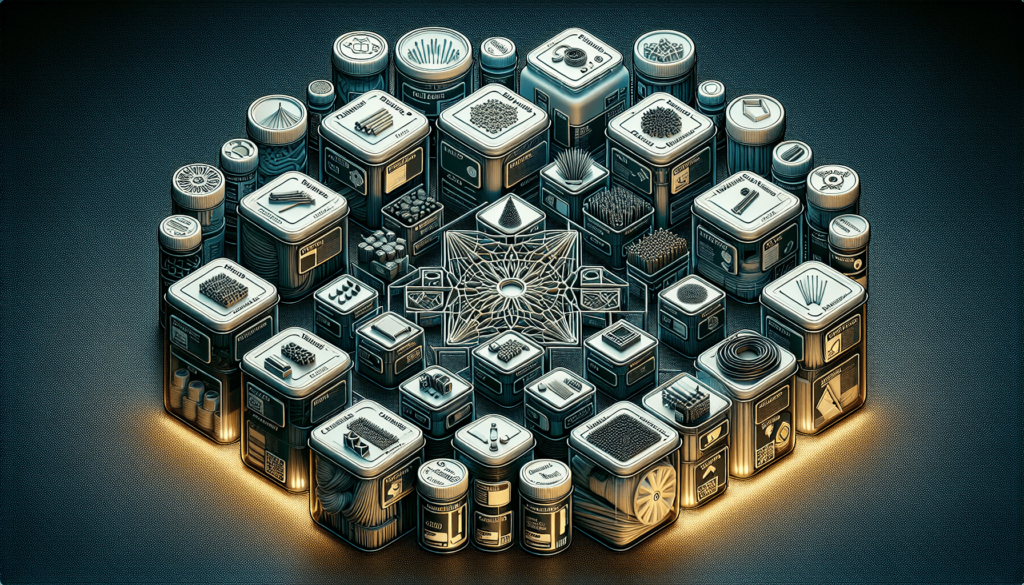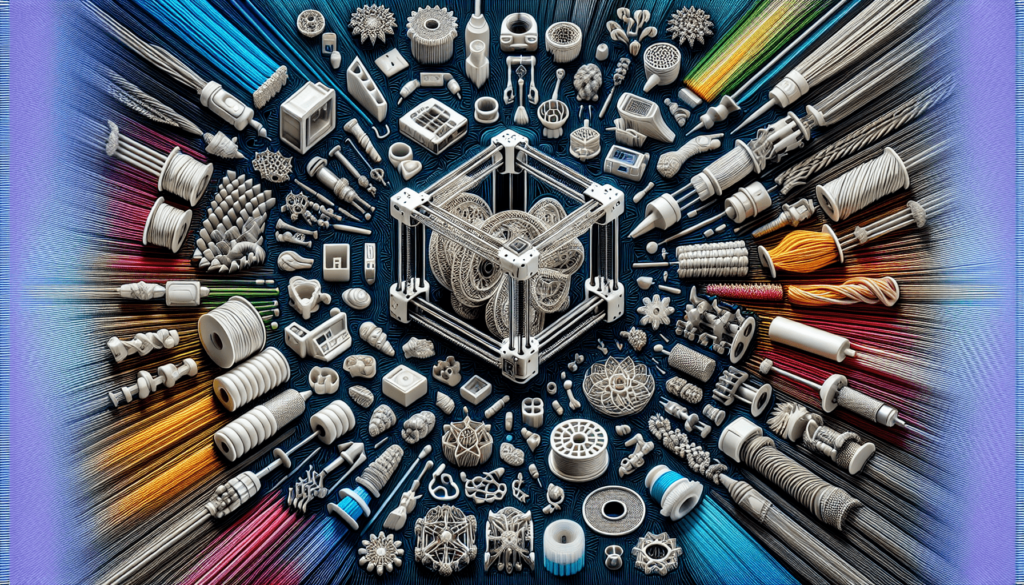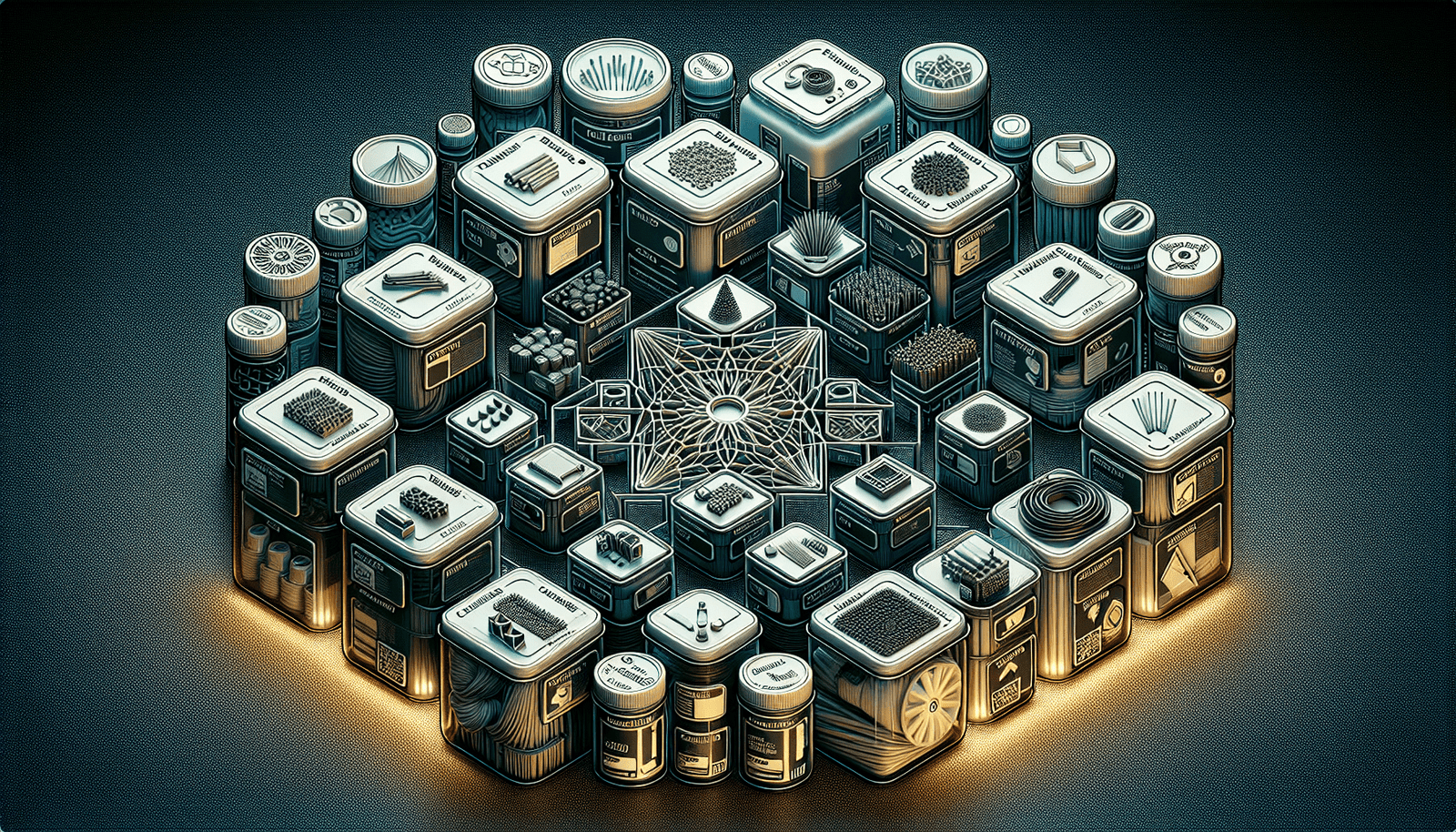If you’re a fan of 3D printing or looking to dive into the world of additive manufacturing, then knowing the best 3D printing resins and filaments is crucial. With the ever-growing popularity of 3D printing, it can be overwhelming to navigate through the extensive range of options available. But fear not! In this article, we will introduce you to the most notable 3D printing resins and filaments, giving you a head start in your journey to creating amazing prints. From flexible filaments to high-performance resins, get ready to explore the exciting possibilities that lie within the realm of 3D printing materials.

Resins
Standard Resins
Standard resins are the most commonly used type of resin for 3D printing. They are known for their versatility and ease of use, making them a great option for beginners. Standard resins are available in a wide range of colors and finishes, allowing for endless possibilities in terms of design and aesthetics. They are also relatively affordable, making them a cost-effective choice for many 3D printing projects.
Engineering Resins
Engineering resins are designed to meet specific performance requirements, making them ideal for functional parts and prototypes. These resins offer properties such as high strength, heat resistance, and chemical resistance, allowing for the creation of durable and reliable components. Engineering resins are commonly used in industries such as automotive, aerospace, and electronics, where precision and performance are paramount.
Flexible Resins
Flexible resins are specifically formulated to produce parts with rubber-like properties. This type of resin is ideal for creating objects that require flexibility and elasticity, such as gaskets, seals, and wearable items. Flexible resins offer a wide range of hardness options, allowing for the creation of both soft and rigid flexible parts. They are also known for their excellent layer adhesion and low shrinkage, resulting in high-quality prints.
Castable Resins
Castable resins are designed for creating molds and investment castings. These resins are capable of producing highly detailed prints with smooth surfaces, making them suitable for jewelry making and other intricate applications. Castable resins are specifically formulated to burn out cleanly during the casting process, leaving behind accurate and high-quality molds that can be used to create metal objects. This makes castable resins a popular choice among jewelry designers and dental professionals.
Bio-Compatible Resins
Bio-compatible resins are specifically designed to be safe for use in biomedical applications. These resins are compliant with medical and dental regulations, making them suitable for creating custom prosthetics, orthodontic appliances, surgical guides, and more. Bio-compatible resins offer high precision and accuracy, allowing for the creation of detailed anatomical models and devices. They are also biocompatible, ensuring compatibility with the human body.

Filaments
PLA Filament
PLA (Polylactic Acid) filament is one of the most popular choices for 3D printing due to its ease of use, low printing temperature, and biodegradable nature. PLA filament is derived from renewable resources such as cornstarch or sugarcane, making it an environmentally friendly option. It offers a wide range of colors and finishes, allowing for vibrant and aesthetically pleasing prints. PLA filament is commonly used in a variety of applications, including prototyping, toys, and decorative items.
ABS Filament
ABS (Acrylonitrile Butadiene Styrene) filament is known for its excellent strength, durability, and impact resistance. It is a popular choice for functional parts that require toughness and reliability. ABS filament has a higher printing temperature compared to PLA, and it can be prone to warping if not properly controlled. However, with the right settings and printing conditions, ABS filament can produce high-quality prints with good dimensional accuracy. It is commonly used in automotive parts, electronic enclosures, and mechanical components.
PETG Filament
PETG (Polyethylene Terephthalate Glycol-Modified) filament offers a combination of the best properties of both PLA and ABS filaments. It is known for its strength, durability, flexibility, and ease of use. PETG filament is less prone to warping compared to ABS, and it provides better layer adhesion and impact resistance compared to PLA. It also has a higher printing temperature than PLA but lower than ABS. PETG filament is commonly used in various applications, including mechanical parts, signage, and food containers.
Nylon Filament
Nylon filament is a versatile and durable material known for its excellent strength, flexibility, and impact resistance. It offers good resistance to abrasion, chemicals, and heat, making it suitable for a wide range of applications. Nylon filament requires a higher printing temperature and a heated print bed to prevent warping. It has low moisture absorption, ensuring dimensional stability in different environments. Nylon filament is commonly used in functional prototypes, gears, and mechanical parts that require high strength and durability.
Wood Filament
Wood filament is a unique type of filament that contains a mixture of PLA and wood fibers. It gives prints a realistic wood-like appearance and texture, making it a popular choice for decorative items, artistic projects, and architectural models. Wood filament can be printed using standard nozzle sizes and temperatures, making it easy to work with. It allows for post-processing techniques such as sanding and staining to enhance the wood-like characteristics of the prints.
Metal Filament
Metal filament, also known as metal-infused filament or metal-filled filament, allows for the 3D printing of metal objects or objects with a metallic appearance. It consists of a base polymer, such as PLA or ABS, infused with metal particles, typically copper, bronze, or iron. Metal filament can be polished or aged to achieve a genuine metal finish. While the prints do not have the same properties as solid metal, metal filament provides a cost-effective way to create metal-like objects for artistic or decorative purposes.
Carbon Fiber Filament
Carbon fiber filament is a high-performance filament known for its exceptional strength, stiffness, and lightness. It is composed of a base polymer infused with carbon fiber strands, resulting in prints with high structural integrity. Carbon fiber filament is commonly used in applications that require extreme rigidity, such as aerospace, automotive, and robotics. It offers improved dimensional stability and resistance to heat and chemicals compared to standard filaments.
Flexible Filaments
Flexible filaments, similar to flexible resins, are designed to produce prints with rubber-like properties. They offer high flexibility, stretchability, and impact resistance, making them ideal for creating objects that require bending and movement. Flexible filaments are commonly used in applications such as wearable devices, gaskets, phone cases, and orthopedic models. They are available in a variety of hardness options, allowing for the creation of soft and stretchy parts or rigid and durable parts.
Water-Soluble Filaments
Water-soluble filaments, most commonly PVA (Polyvinyl Alcohol), are used as support materials for complex prints with overhangs or intricate geometries. These filaments dissolve in water, making it easy to remove them from the final print without leaving any residue. Water-soluble filaments are commonly used in combination with other filaments such as PLA or ABS. They allow for the creation of complex and detailed prints with minimal manual post-processing.
Conductive Filaments
Conductive filaments are specially formulated to allow for the 3D printing of objects with electrical conductivity. They contain conductive materials, typically carbon or metal particles, dispersed within a base polymer. Conductive filaments enable the creation of functional electronic components, such as sensors, circuits, and antennas, directly through 3D printing. They offer conductivity properties similar to traditional wiring, allowing for the integration of electronics into printed objects.
In conclusion, the world of 3D printing resins and filaments offers a vast array of options to cater to various needs and applications. Whether you are a beginner looking for versatility and affordability or an engineer requiring high-performance materials, there is a resin or filament available to meet your requirements. From standard resins to specialized options like bio-compatible or conductive filaments, the possibilities are endless in the world of 3D printing. So, explore the options, experiment with different materials, and unlock the full potential of additive manufacturing with the right resin or filament for your next project. Happy printing!

